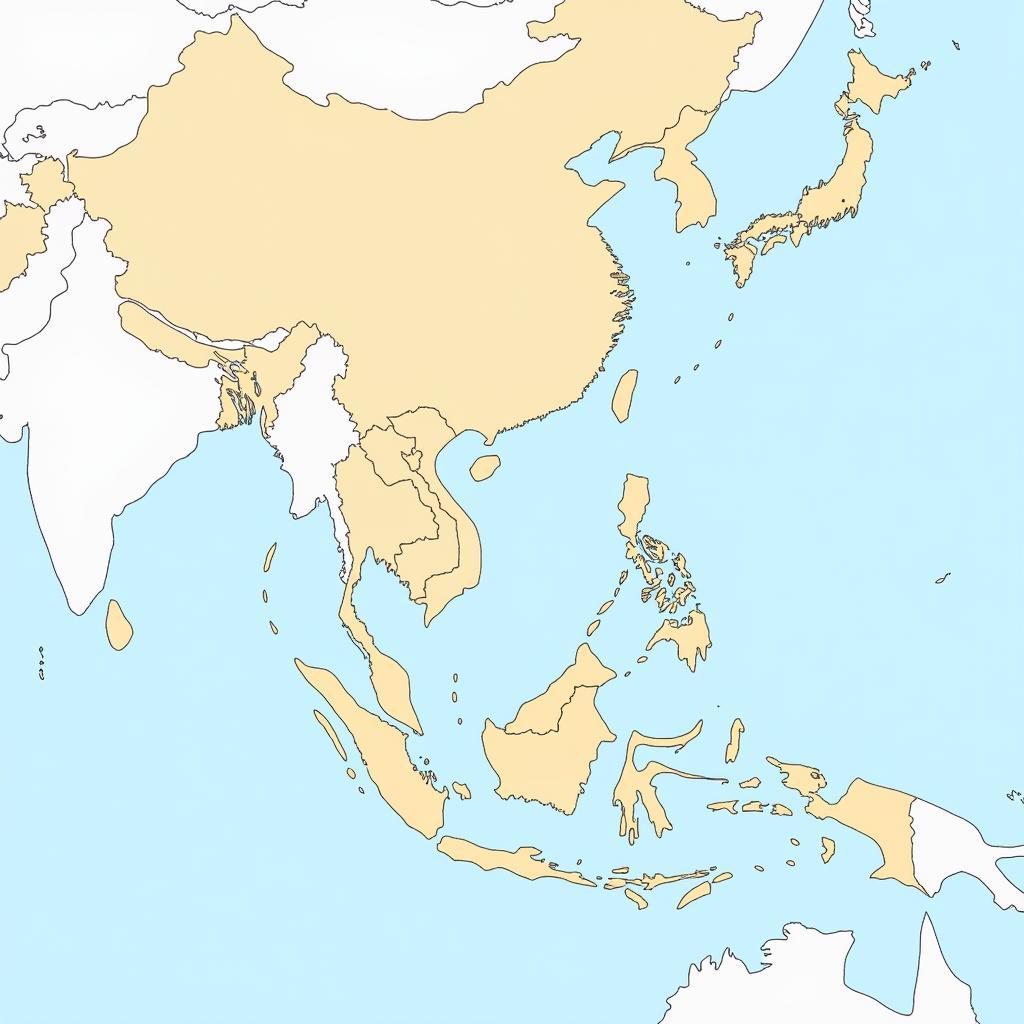The 1992 Asean Declaration On The South China Sea is a pivotal document in the ongoing narrative of maritime disputes and regional cooperation in Southeast Asia. This declaration, born out of rising tensions and the need for a peaceful resolution, serves as a foundation for ASEAN’s approach to the complex web of overlapping claims in the South China Sea. It emphasizes the importance of dialogue, cooperation, and adherence to international law, particularly the United Nations Convention on the Law of the Sea (UNCLOS).
A Deep Dive into the 1992 Declaration
The declaration, formally known as the “Declaration on the South China Sea,” was signed in Manila on July 22, 1992, by the foreign ministers of the Association of Southeast Asian Nations (ASEAN). It arose from a growing concern among ASEAN member states about the increasing militarization and potential for conflict in the South China Sea. The document calls upon all parties to exercise self-restraint in the area and to resolve disputes through peaceful means, without resorting to the threat or use of force. See more information on key dates in ASEAN history at ase key dates.
Key Provisions and Their Significance
The 1992 Declaration outlines several key principles. It urges all parties to respect the principles of international law, including UNCLOS, in their activities in the South China Sea. The declaration also encourages the adoption of cooperative activities, such as joint exploration and development of resources, to build trust and enhance stability in the region. Furthermore, it emphasizes the importance of dialogue and consultations among all concerned parties to resolve disputes amicably.
“The 1992 Declaration, while not legally binding, reflects a shared commitment among ASEAN members to maintain peace and stability in the South China Sea,” says Dr. Amelia Tran, a prominent expert on Southeast Asian geopolitics. “It lays the groundwork for future cooperation and conflict management in the region.”
The Declaration’s Impact and Challenges
The 1992 Declaration has played a significant role in shaping ASEAN’s approach to the South China Sea issue. It has provided a framework for dialogue and cooperation among member states and has served as a basis for subsequent regional agreements. However, the declaration has faced challenges in its implementation. For more about ASEAN’s history, visit our ase timeline.
Ongoing Disputes and the Need for a Code of Conduct
The South China Sea remains a contested area, with overlapping claims and ongoing disputes. The 1992 Declaration, while important, does not address the specific territorial disputes or define maritime boundaries. The ongoing negotiations for a Code of Conduct (COC) in the South China Sea demonstrate the continuing efforts to build upon the foundation laid by the 1992 Declaration.
“The COC is seen as a crucial next step in strengthening the legal framework for managing the South China Sea disputes,” notes Dr. Nguyen Van Minh, a leading scholar on international maritime law. “It offers an opportunity to clarify maritime rights and obligations and to enhance cooperation among all parties.” The role of ASEAN as a security community is discussed further on our page asean as a security community. You can also explore how ASEAN interacts with the UN on this page asean associated with uno.
Conclusion
The 1992 ASEAN Declaration on the South China Sea remains a cornerstone of ASEAN’s efforts to promote peace and stability in the region. While challenges persist, the declaration continues to serve as a vital framework for dialogue and cooperation. The continued pursuit of a Code of Conduct, informed by the principles of the 1992 Declaration, offers hope for a more peaceful and prosperous future in the South China Sea. For a reflection on ASEAN’s journey, you can check out asean at 52.
Need support? Contact us 24/7: Phone: 0369020373, Email: aseanmediadirectory@gmail.com, or visit us at Thôn Ngọc Liễn, Hiệp Hòa, Bắc Giang, Việt Nam.

